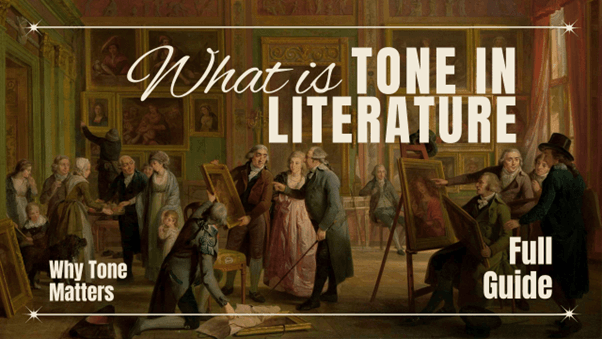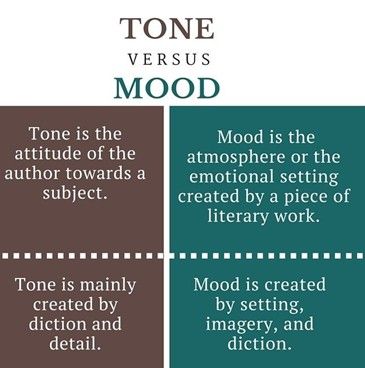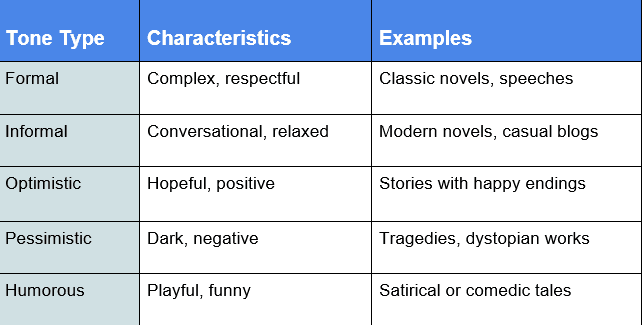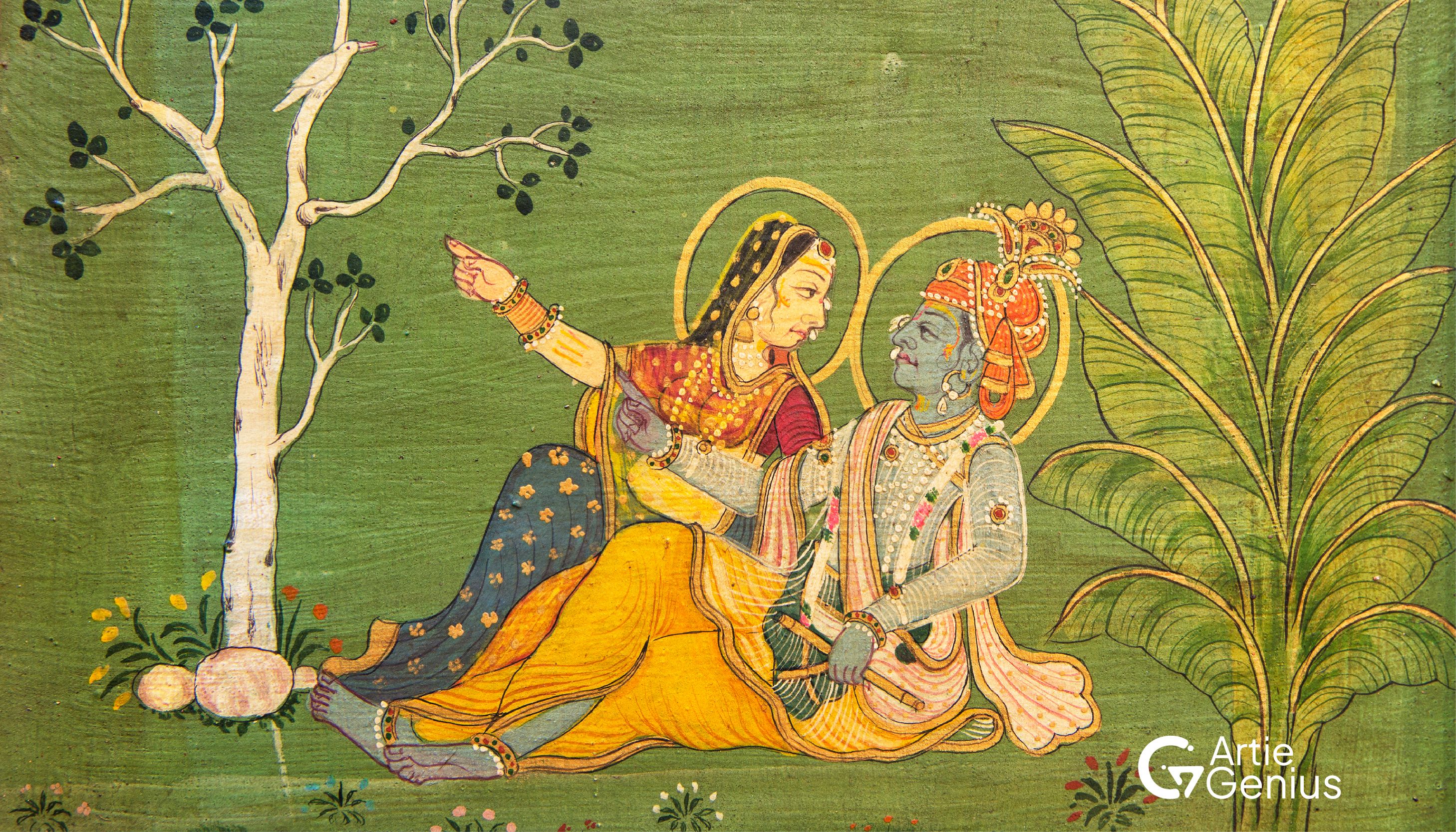In literature, tone refers to more than the structural aspect that words are placed on a piece of paper; rather, it is the author's very voice that will make readers feel something, think about something, and respond. Here, "what is tone in literature?" explains how it changes writing and why it matters so deeply for both readers and writers alike.
What is Tone in Literature
At its core, tone in literature refers to the attitude of the author toward the subject, characters, or even the reader. Through word selection, sentence construction, and style, the author can present his attitude toward what he writes. Finally, tone can be hopeful and optimistic, dark and foreboding, giving a story a depth and dimension that readers connect with emotionally.

Example: In order, to understand the difference between a mocking tone and a real tone, just think about how one and the same sentence may achieve a different meaning simply due to tone.
Why Tone Matters in Literature
Tone and literature go well together. The tone is essential because:
- It Determines Mood: It determines the mood and, hence, how the reader feels when reading.
- Shapes Characters and Plot: The way a plot is shaped using tone can affect the very way readers perceive characters.
- Engages the Reader: Good tone, well done, lets the reader get into the story and makes him interested in the narrative.
- Whether we're reading a light-hearted comedy or a serious tragedy, it's a tone in literature which is the subtle influence that directs our feelings and expectations.
Different Types of Tone in Literature
For a better understanding of "what is tone in literature," let's dive into some of the most common types of tone that authors use to make their work richer:
- Formal Tone: Serious writing, full of formal language and polite speech, is often seen in classic literature.
- Informal Tone: Characterized with informal language which suggests a casual, familiar tone and is very common in modern novels.
- Optimistic Tone: The writer wishes for and is optimistic even if the conditions are very trying.
- Pessimistic Tone: This tone of writing portrays a pessimistic view of life and is typically representative of tragedy or dark literature.
Authors can also employ tones such as humour, sadness, passion, sarcasm, or drama-all of which impart a unique sort of effect.
How to Identify Tone in Literature
Literature tone identification does not appear to be difficult; indeed, if you observe some significant features, it becomes a little bit easier:

- Word Choice: Are the words funny or serious? Do they bring happiness or sadness?
- Sentence structure: Short, punchy sentences could make the tone seem urgent; long, winding sentences could give off a thoughtful or sombre tone.
- Imagery and Symbolism: Imagery itself can be indicative of the tone, like bright colours indicating a happy tone or shadows representing a dark tone.
All these elements help in deciphering the tone used by the author and allow a deeper meaning in the story.
Examples of Tone in Literature
To illustrate "what is tone in literature," let's take a gander at some examples:
Pride and Prejudice by Jane Austen: Witty and satiric, Pride and Prejudice mocks the societal perspective on marriage and class. 1984 by George Orwell: The bleak and ominous tone lets the reader see clearly the oppression in a dystopian world.
To Kill a Mockingbird by Harper Lee: An empathetic, hopeful tone, while taking on some of the most serious social justice issues of any work. These examples demonstrate just how tone assists in helping us understand the stance of the author, making our reading much more effective.
Tone vs. Mood: What's the Difference?
Whilst "tone in literature" is quite confusingly used to interchange with mood, they are actually two separate terms:
- Tone: Is the attitude of the author to the subject.
- Mood: Is the feeling that the reader derives from the story.

For example, in a horror story, the tone may be mysterious or tense, while mood achieved by the reader is fear or anxiety. When these two tones and moods are combined, they add up to a great novel.
The tone of a Story and Its Evolution
Even the tone of a story can change in ways related to character or events changing. Such techniques keep the readers well entrenched and allow for character development. Often within novels, after an optimistic tone is established, it becomes sombre as conflicts escalate, only then turning hopeful once again at the conclusion. These shifts intentionally move readers through an emotional course that parallels the characters' growth.
Tips for Writers to Develop Tone in Literature
Mastering tone is one of the most difficult things to master for every single writer. Here's how you can be one of them: Know your audience, because that does the trick in changing the tone.
Word choice: Every word matters; pick words that create the tone you are looking for. Read it out loud: Sometimes, the best way to figure out a tone is by having someone read aloud what you've written. It helps you feel the tone and adjust on your own. Mastering tone takes some skill, but the vast thing is that it digs straight into the storytelling and makes it remarkable as well as effective.
A Visual Guide For Tones:

Final Words: What is Tone in Writing?
More than a stylistic choice, tone is the heartbeat of a story. Knowing what tone in writing is like unearthing layers of meaning within a text; we appreciate literature much better that way. Tone sets the stage, colours our emotions, and leaves an indelible mark on the reader's experience.
Understanding what tone is will help readers connect to the story and for writers, apply their tones in stories in a marvellous, enchanting way. The next time you read a book, tune into its tone that's the secret to unlocking an author's real voice.



